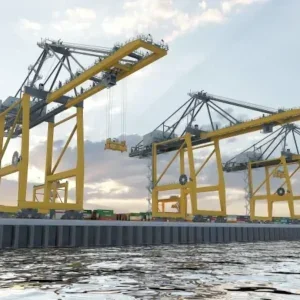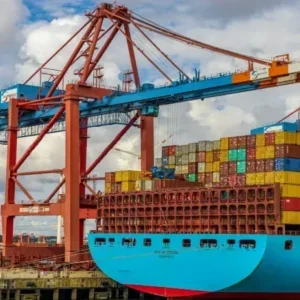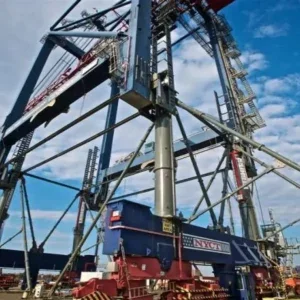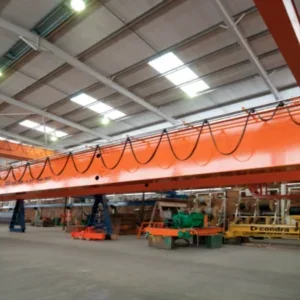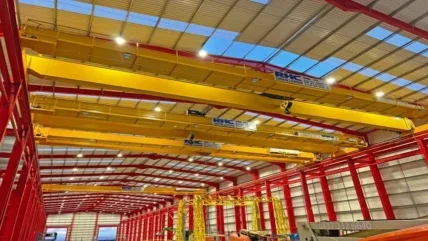
The modern world is experiencing an unprecedented level of societal polarisation, a phenomenon that transcends political, social, and economic boundaries. This division is increasingly affecting various industries, including the overhead lifting equipment and material handling sector. The ramifications of this polarisation are far-reaching, influencing everything from workforce dynamics to supply chain management. In this comprehensive article, we delve into the various facets of societal polarisation and its impact on the overhead lifting and material handling industry, offering insights and strategies for navigating these challenging times.
Understanding societal polarisation
Defining societal polarisation
Societal polarisation refers to the growing divide between different groups within society, characterised by stark differences in opinions, values, and beliefs. This divide often manifests in political affiliations, economic disparities, and cultural conflicts. As communities become more polarised, the middle ground diminishes, making it difficult to find common solutions to shared problems.
Causes of societal polarisation
Several factors contribute to societal polarisation:
- Economic Inequality: The widening gap between the wealthy and the poor exacerbates tensions.
- Political Partisanship: Increasingly partisan media and political rhetoric fuel division.
- Technological Disruption: Social media and digital platforms create echo chambers where individuals are exposed primarily to like-minded perspectives.
- Cultural Shifts: Rapid changes in social norms and cultural values can lead to generational and ideological clashes.
Impact on the overhead lifting and material handling industry
Workforce challenges
The workforce in the overhead lifting and material handling industry is not immune to societal polarisation. The following are key issues faced by employers and employees:
- Diverse Workforce: As companies strive to create more inclusive workplaces, they often encounter friction between employees with differing viewpoints. Managing this diversity requires sensitive handling to maintain a harmonious work environment.
- Labour Shortages: Polarisation can influence young people’s career choices, with some viewing trades and manual labour less favourably. This perception contributes to a shortage of skilled labour in the industry.
- Union Dynamics: Labour unions can become battlegrounds for political and ideological conflicts, complicating negotiations and affecting worker morale.
Supply chain disruptions
The overhead lifting and material handling industry relies heavily on a smooth and efficient supply chain. Societal polarisation impacts this in several ways:
- Trade Policies: Shifts in political power can lead to changes in trade policies, tariffs, and import/export regulations, creating uncertainty for manufacturers and suppliers.
- Global Tensions: Geopolitical polarisation can disrupt international supply chains, particularly when diplomatic relations sour between key trading partners.
- Resource Scarcity: Environmental and social policies influenced by polarised viewpoints can affect the availability and cost of raw materials.
Technological adaptation
Technology plays a critical role in the industry, from automation to data analytics. However, polarisation affects technological adoption and innovation:
- Investment Decisions: Polarised perspectives on economic policies can influence corporate investment in new technologies. Uncertain regulatory environments may lead to hesitancy in adopting cutting-edge solutions.
- Cybersecurity Threats: Increased polarisation can lead to heightened cybersecurity risks, as politically motivated cyberattacks target industry infrastructure.
- Innovation Barriers: Polarised debates on privacy, surveillance, and data usage can hinder the development and deployment of advanced technologies.
Strategies for Navigating Polarisation
Fostering inclusive work environments
Creating a workplace culture that embraces diversity and inclusivity can mitigate the effects of polarisation:
- Training Programs: Implement training programmes that focus on cultural competency, conflict resolution, and emotional intelligence to help employees navigate differences.
- Open Dialogue: Encourage open and respectful dialogue among employees to foster understanding and cooperation.
- Flexible Policies: Develop flexible policies that accommodate diverse needs and perspectives, ensuring all employees feel valued and respected.
Strengthening supply chains
Building resilient supply chains is crucial for mitigating the impact of polarisation:
- Diversification: Diversify suppliers and sourcing locations to reduce dependence on any single region or political climate.
- Risk Management: Implement robust risk management strategies to anticipate and respond to geopolitical and economic disruptions.
- Collaboration: Engage in collaborative partnerships with suppliers and other stakeholders to create a more integrated and resilient supply chain.
Embracing technological innovation
Despite the challenges posed by polarisation, embracing technological innovation is essential for industry growth:
- Continuous Improvement: Invest in continuous improvement programmes to stay ahead of technological trends and maintain a competitive edge.
- Cybersecurity Measures: Strengthen cybersecurity measures to protect against politically motivated cyber threats.
- Balanced Approach: Adopt a balanced approach to technology that considers both the benefits and potential ethical implications, ensuring responsible innovation.
Case Studies: Industry Responses to Polarisation
Case study 1: diversity and inclusion initiatives
A leading manufacturer in the overhead lifting equipment industry implemented a comprehensive diversity and inclusion (D&I) strategy to address workforce polarisation. By conducting regular D&I training and establishing employee resource groups (ERGs), the company fostered a more inclusive environment. This initiative not only improved employee morale but also enhanced productivity and innovation.
Case study 2: supply chain resilience
A global material handling company faced significant supply chain disruptions due to geopolitical tensions. In response, the company diversified its supplier base and invested in advanced supply chain management software. These measures increased supply chain visibility and flexibility, enabling the company to navigate disruptions more effectively.
Case study 3: technological advancement
An overhead crane manufacturer adopted a forward-thinking approach to technological innovation despite the polarised environment. By investing in research and development and collaborating with tech startups, the company introduced several groundbreaking products. These innovations improved operational efficiency and positioned the company as an industry leader.
The Future of the Industry in a Polarised World
Evolving workforce dynamics
As societal polarisation continues to shape the workforce, companies in the overhead lifting and material handling industry must remain adaptable:
- Future Skills: Focus on developing future skills through training and education to prepare employees for evolving industry demands.
- Youth Engagement: Engage with younger generations through outreach programmes and apprenticeships to address labour shortages and shift perceptions about careers in the industry.
- Employee Well-being: Prioritise employee well-being by offering support services and fostering a positive work-life balance.
Sustainable supply chains
Building sustainable and resilient supply chains will be crucial for long-term success:
- Sustainability Practices: Adopt sustainable practices that minimise environmental impact and align with social responsibility goals.
- Transparency: Increase transparency in supply chain operations to build trust and accountability with stakeholders.
- Innovation in Logistics: Leverage innovative logistics solutions, such as automation and artificial intelligence, to enhance supply chain efficiency and resilience.
Technological leadership
Leading in technology will be key to thriving in a polarised world:
- AI and Automation: Continue to explore the potential of artificial intelligence and automation to drive efficiency and innovation.
- Smart Manufacturing: Invest in smart manufacturing technologies that integrate IoT, big data, and robotics to optimise production processes.
- Collaborative Innovation: Foster a culture of collaborative innovation by partnering with other industry players, academic institutions, and technology providers.
Conclusion
Societal polarisation presents significant challenges and opportunities for the overhead lifting equipment and material handling industry. Industry players can navigate these turbulent times by fostering inclusive work environments, strengthening supply chains, and embracing technological innovation. As the world continues to evolve, adaptability and resilience will be key to sustaining growth and achieving long-term success.


